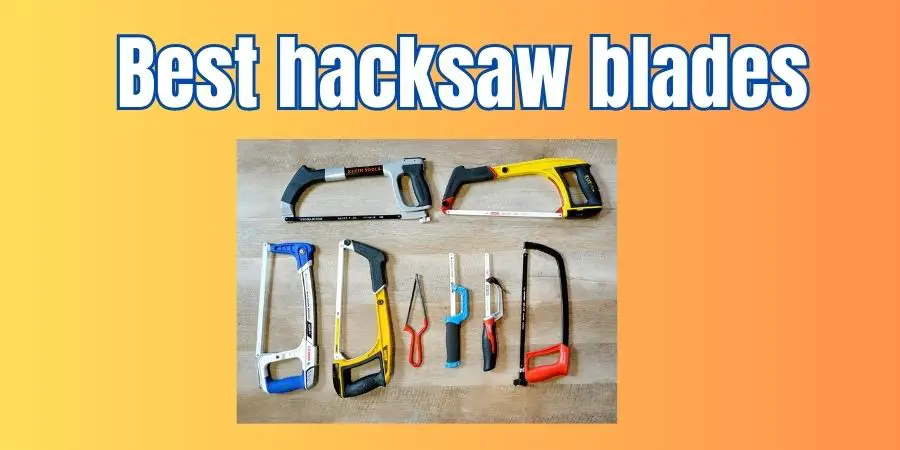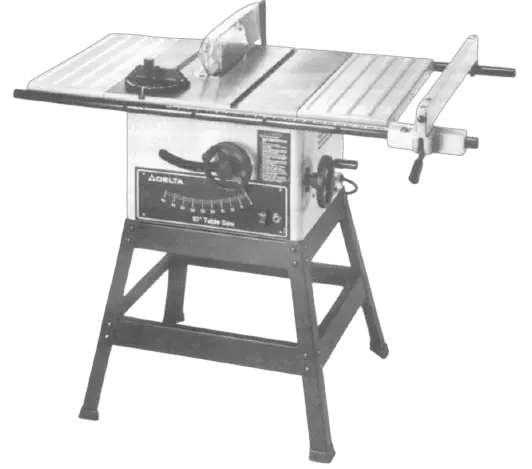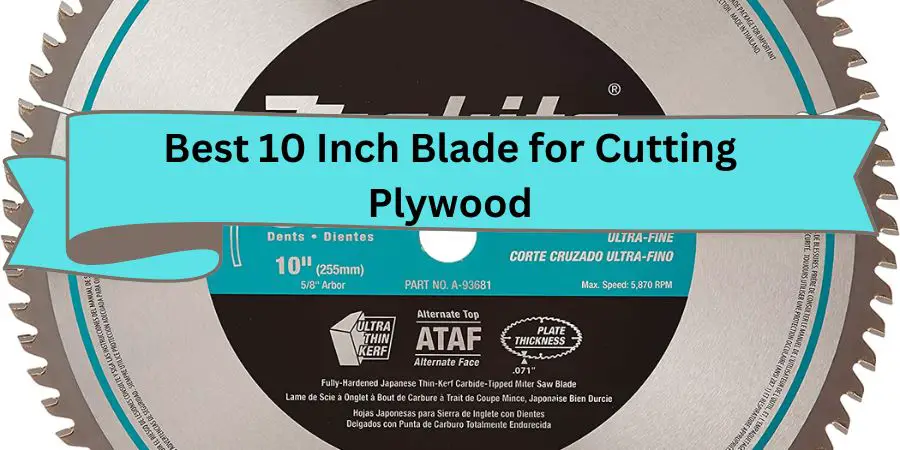If you’re looking for a reliable hacksaw blade, it’s important to consider the cutting material you’ll be working with.
When selecting a hacksaw blade, it’s important to consider the thickness of the material you’ll be cutting and the TPI rating of the blade.
Here are some general guidelines for selecting the appropriate TPI:
- For general-purpose cutting, a blade with 14 to 18 TPI is a good choice.
- For cutting thicker materials, a blade with 8 to 10 TPI is better suited.
- For cutting thinner materials, a blade with 24 to 32 TPI is more appropriate.
However, keep in mind that the type of material being cut also affects the TPI selection, as harder materials may require fewer TPI for effective cutting.
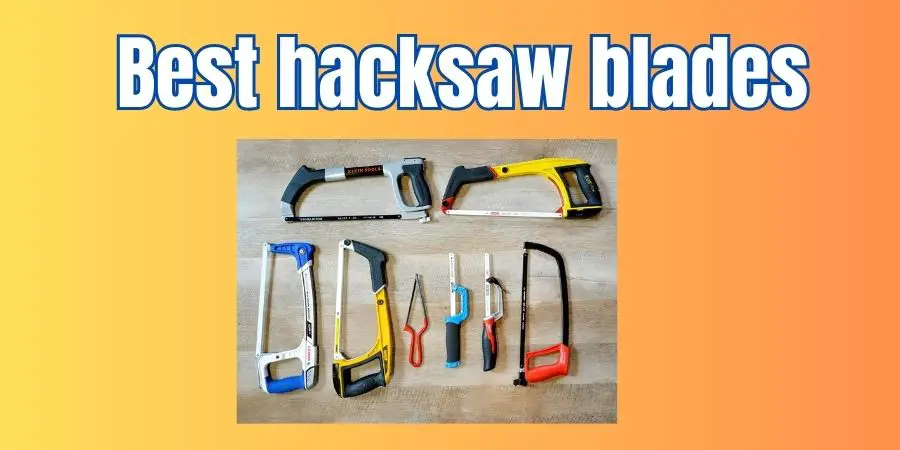
Best Types Of Hicksaw blades for (wood & Metal) (Tested by experts)
Best hicksaw blade for Wood and Metal: Bosch 2608654404 Sabre Saw Blade “S 2345 X” (5 Piece)

Bi-metal construction for durability and longer blade life.
If you’re looking for a reliable saw blade that can handle various materials, the Bosch Sabre Saw Blade is an excellent option. With high-carbon steel construction and sharp teeth, it can cut through wood and metal with ease.
Plus, with five blades in a pack, you’ll always have a spare when you need it. And swapping out the blades is a breeze, making it a convenient choice for both DIY enthusiasts and professionals.
Best hicksaw blade for Tough Cutting Tasks: Irwin Bi Metal Hacksaw Blades 300Mm 12In X 32T Pack Of 2
Bi-metal construction for toughness and flexibility.
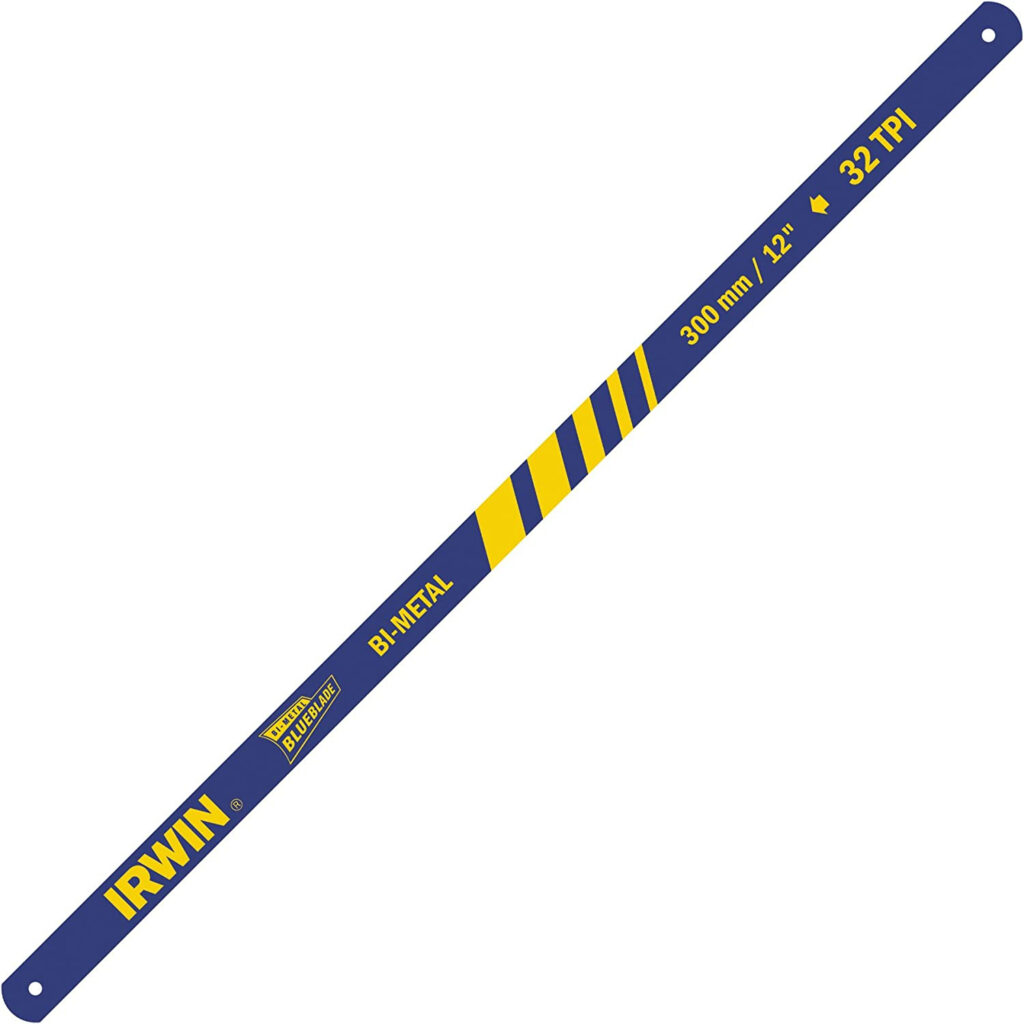
For those tough cutting tasks, the Irwin Bi-Metal Hacksaw Blades are a great choice. The high-speed steel cutting edge can handle wood and metal with ease, and the 32 teeth per inch make it fast and efficient.
With two blades in a pack, you won’t have to worry about running out any time soon. And changing the blades is a breeze, so you can get back to your cutting tasks in no time.
Best hicksaw blade for Metal Cutting- LENOX Tools Hacksaw Blade, 12-Inch, 24 TPI, 2-Pack (20161T224HE)
High-speed steel teeth for enhanced cutting ability and longer blade life.

When it comes to metal cutting, the LENOX Tools Hacksaw Blade is a reliable choice. Constructed with bi-metal, it’s built to last and can handle tough cutting tasks with ease.
With two blades in a pack, you’ll always have a spare when you need it. And with 24 teeth per inch, you can make quick work of thick materials. This blade is a great option for professionals and DIY enthusiasts alike.
Best hicksaw blade for Contractors and Tradesmen:- Starrett Bi-Metal Unique HSS Safe-Flex Hand Hacksaw Blade – Ideal for Contractors and Tradesmen
Unique design with a flexible back and high-speed steel teeth for improved performance.

For contractors and tradesmen, the Starrett Bi-Metal Unique HSS Safe-Flex Hand Hacksaw Blade is an excellent choice. Its unique design allows for flexibility without compromising durability, making it a reliable option for tough cutting tasks.
With sharp teeth and high-speed steel construction, it can handle wood and metal with ease. This blade is a bit pricier than some of the others, but its quality and durability make it a worthwhile investment.
Best for Stocking Up:-BAHCO 3906-300-32-10P 10 Pack 12 Inch Bimetal Hand Hacksaw Blade with 32 Teeth Per Inch , Red
Bimetal construction for strength and durability, with 32 teeth per inch for smooth cuts.
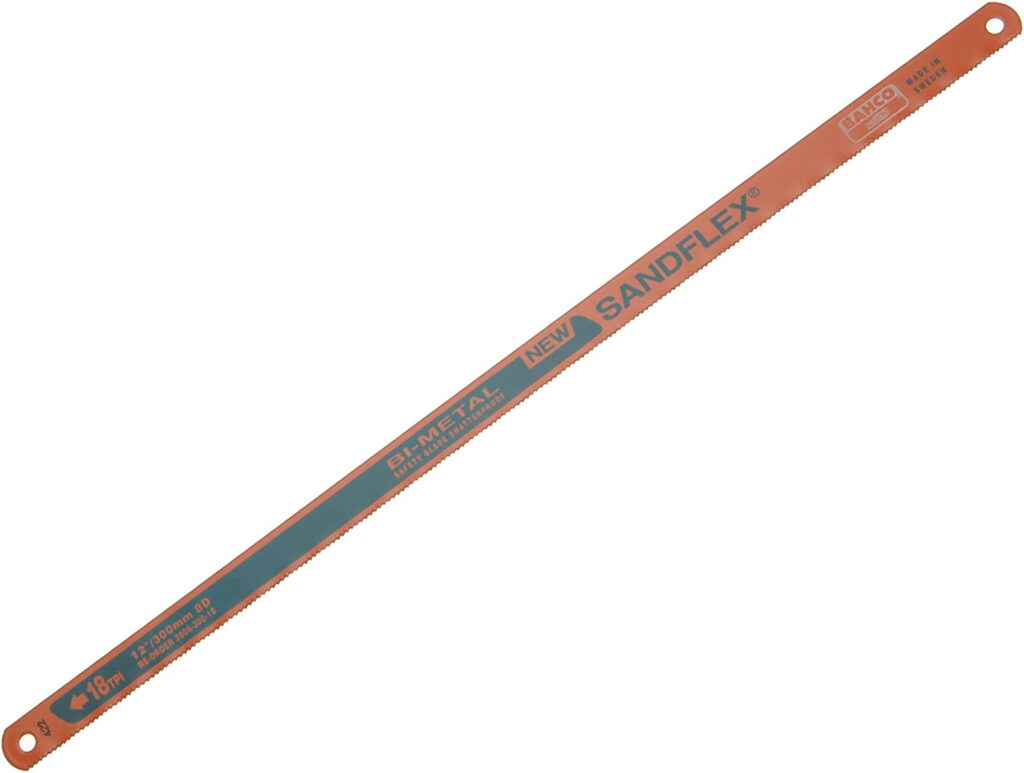
The BAHCO Bimetal Hand Hacksaw Blade is a great option if you’re looking to stock up. With 10 blades in a pack, you’ll be prepared for all your cutting tasks.
Constructed with bi-metal and 32 teeth per inch, it can handle a variety of materials with ease. And the red color makes it easy to spot in your toolbox. This blade is a great value for both professionals and DIY enthusiasts.
Best hicksaw blades for Abrasive Materials:-SnapOn 3906-300-24-5P Bahco 12-Inch Sand Flex Bi Metal Hand Hacksaw Blade, 5-Pack
Sandflex® technology for increased blade life, with bi-metal construction for toughness.
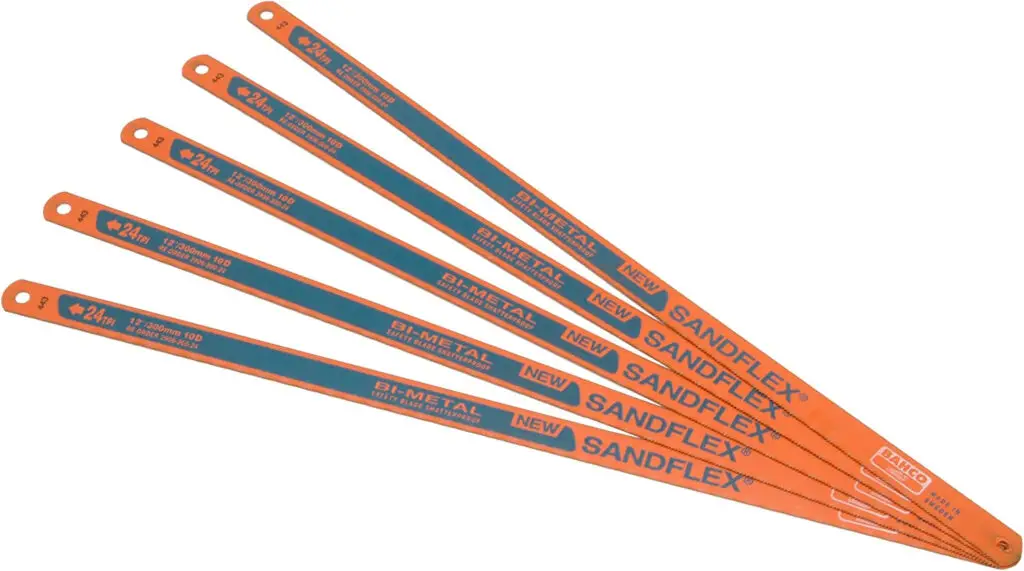
If you’re looking for a blade that can handle tough materials without dulling quickly, the SnapOn Bahco Sand Flex Bi Metal Hand Hacksaw Blade is a great option. With sandflex technology, it can handle abrasive materials without compromising durability.
With five blades in a pack, you’ll have plenty to work with. And with 24 teeth per inch, you can cut through thick materials with ease. This blade is a bit pricier than some of the others, but its durability and efficiency make it a worthwhile investment.
Best hicksaw blades for Metal Cutting: LENOX Tools Hacksaw Blade, Bi-Metal, Metal Cutting, 10-inch, 24 TPI, 2-Pack (23930T024HE
Set includes 8 blade types for versatility in multiple cutting applications.

The LENOX Tools Hacksaw Blade is a great option if you need a blade that can handle metal cutting tasks. With bi-metal construction and 24 teeth per inch, it can make quick work of thick materials.
With two blades in a pack, you’ll always have a spare when you need it. And swapping out the blades is easy, so you can get back to your cutting tasks in no time. This blade is a great choice for both professionals and DIY enthusiasts.
Hacksaw Blade: TPI Guide for Different Materials
When choosing a hacksaw blade, one of the most important considerations is the TPI (teeth per inch). The TPI determines the blade’s ability to cut different materials effectively. Here’s a breakdown of the TPI guide for common materials:
18 TPI
Hacksaw blades with 18 TPI are ideal for cutting thin materials such as sheet metal, tubing, and conduit. The large gap between the teeth allows for a faster and smoother cut, making it an excellent choice for materials that require precision cuts.
24 TPI
Blades with 24 TPI are ideal for cutting thicker materials such as pipes, aluminum, and other metals. With a smaller gap between the teeth, it provides a smoother and more controlled cut, making it an excellent choice for materials that require a more precise and accurate cut.
Higher TPI
Blades with higher TPI, such as 32 TPI or 36 TPI, are ideal for cutting harder materials such as stainless steel or hardened steel. These blades have smaller gaps between the teeth, providing a smoother and more accurate cut. However, they require more time and effort to cut through thicker materials.
A guide for choosing the right hacksaw blade-
For Cutting Metal
If you’re cutting through metal, you’ll need a blade that can handle the toughness and hardness of the material. We recommend looking for a blade with a high TPI (teeth per inch) count and made of a durable material such as bi-metal.
For Cutting Wood
If you’re cutting through wood, you’ll need a blade that can handle the softer material and provide a clean cut. Blades with fewer teeth per inch are ideal for cutting through wood.
For Cutting PVC and Other Plastics
Cutting through PVC and other plastics can be tricky, as the material can melt and become gummed up on the blade. For these materials, you’ll want a blade with fewer teeth per inch and a special coating to prevent gumming.
For General Purpose Cutting
If you’re looking for a blade that can handle a variety of materials, including metal, wood, and plastics, a general-purpose blade with a medium TPI count should do the trick.
FAQs: Best Hacksaw Blades for Wood & Metal (Tested by Experts)
What is a hacksaw blade?
A hacksaw blade is a cutting tool designed for cutting various materials like metal and wood. It is a thin, narrow blade with fine teeth that fit into a hacksaw frame.
What are the different types of hacksaw blades?
Hacksaw blades come in various types:
- Bi-metal blades: Made from two different metals, offering flexibility and durability.
- Carbon steel blades: Suitable for cutting softer materials like wood.
- High-speed steel (HSS) blades: Ideal for cutting harder materials like metal.
What are the best hacksaw blades for cutting wood?
Experts recommend the following hacksaw blades for cutting wood:
- Stanley 15-842 Hacksaw Blade: Known for its durability and smooth cuts.
- Lenox Tools Hacksaw Blade: Offers a clean and precise cut with long-lasting performance.
- Bosch 12-Inch Wood Cutting Blade: Great for quick, efficient woodcutting.
What are the best hacksaw blades for cutting metal?
For cutting metal, these hacksaw blades are highly rated by experts:
- Lenox Tools Bi-Metal Hacksaw Blade: Offers superior performance and longevity.
- DeWalt DWHT20547L Bi-Metal Blade: Known for its robustness and cutting efficiency.
- Irwin Tools Marathon High-Speed Steel Blade: Provides excellent performance on tough metals.
How do I choose the right hacksaw blade for my project?
To choose the right hacksaw blade:
- Material: Consider the material you are cutting (wood, metal, plastic, etc.).
- Teeth per inch (TPI): Higher TPI blades are better for cutting metal, while lower TPI blades are suitable for wood.
- Blade length: Ensure the blade fits your hacksaw frame and the size of your project.
How often should I replace my hacksaw blade?
Replace your hacksaw blade when:
- It becomes dull: If cutting becomes difficult or slow.
- Teeth are damaged: Missing or bent teeth reduce cutting efficiency.
- It breaks: A broken blade is unsafe and ineffective.
Are there any safety tips for using hacksaw blades?
Yes, follow these safety tips:
- Wear protective gear: Use gloves and safety goggles.
- Secure the material: Clamp the material to prevent movement.
- Use proper technique: Apply steady, even pressure and avoid twisting the blade.
- Inspect the blade: Ensure the blade is in good condition before use.
Can I use the same hacksaw blade for wood and metal?
While some bi-metal blades can cut both wood and metal, it is best to use specific blades designed for each material for optimal performance and longevity.
What is the lifespan of a hacksaw blade?
The lifespan of a hacksaw blade depends on the frequency of use, the materials cut, and the blade quality. Regular inspection and proper maintenance can extend its lifespan.

